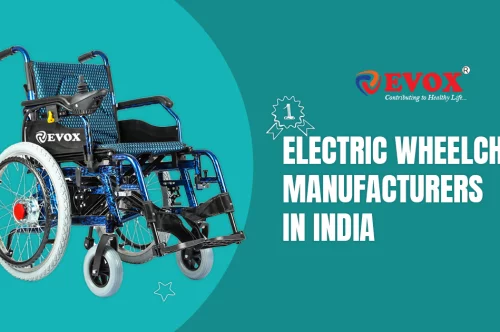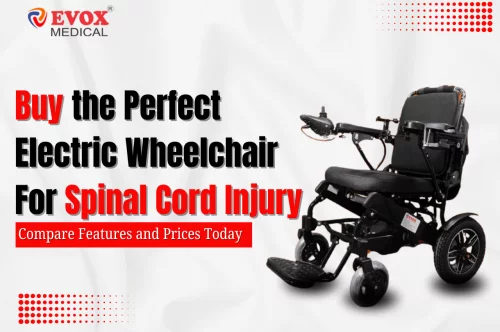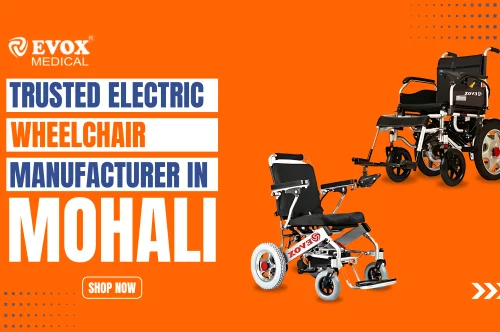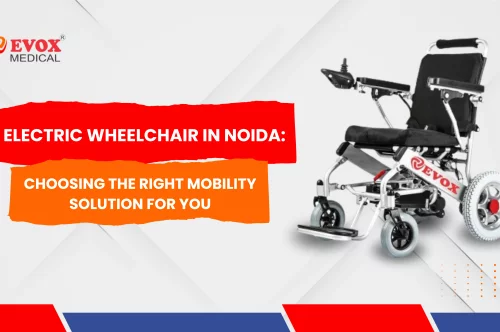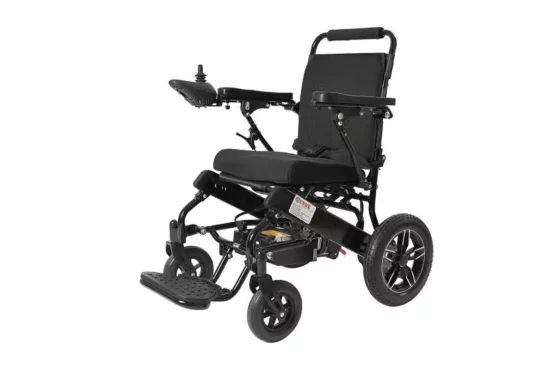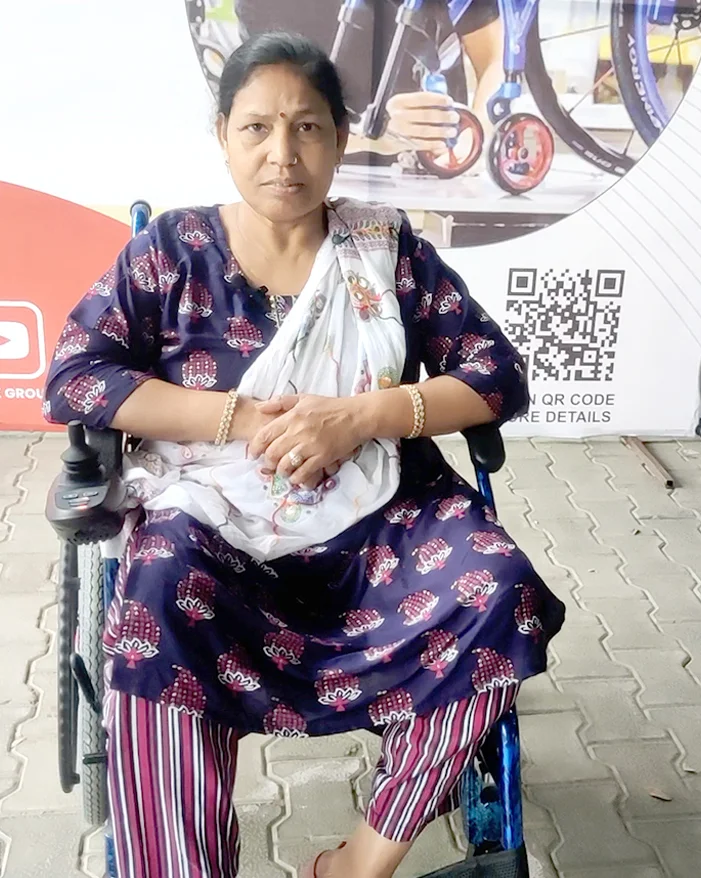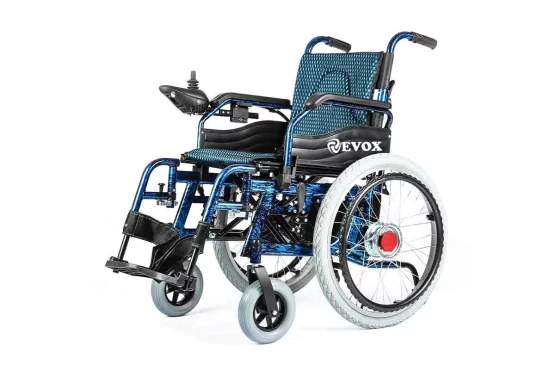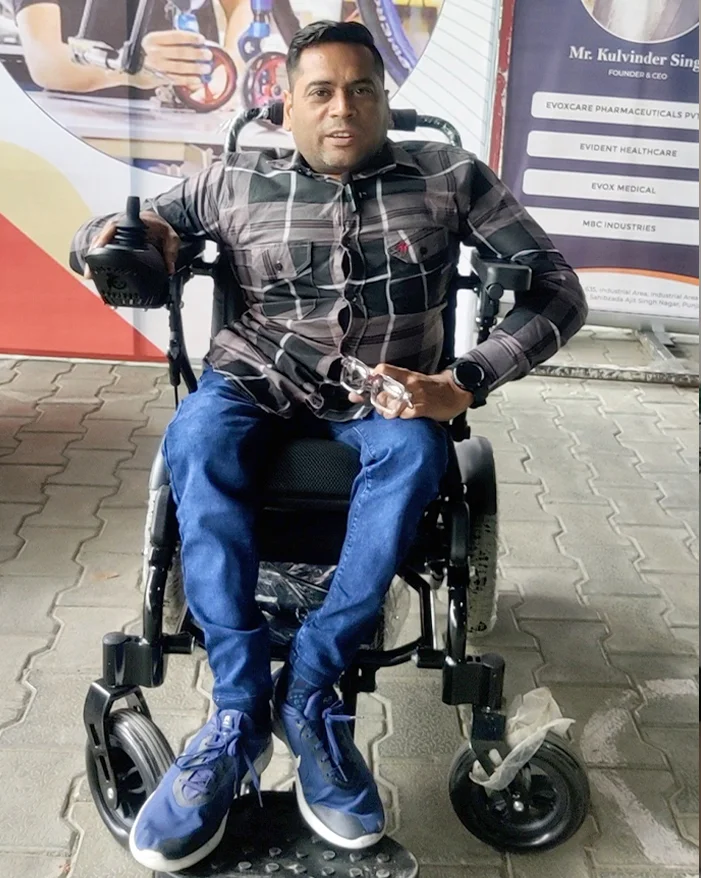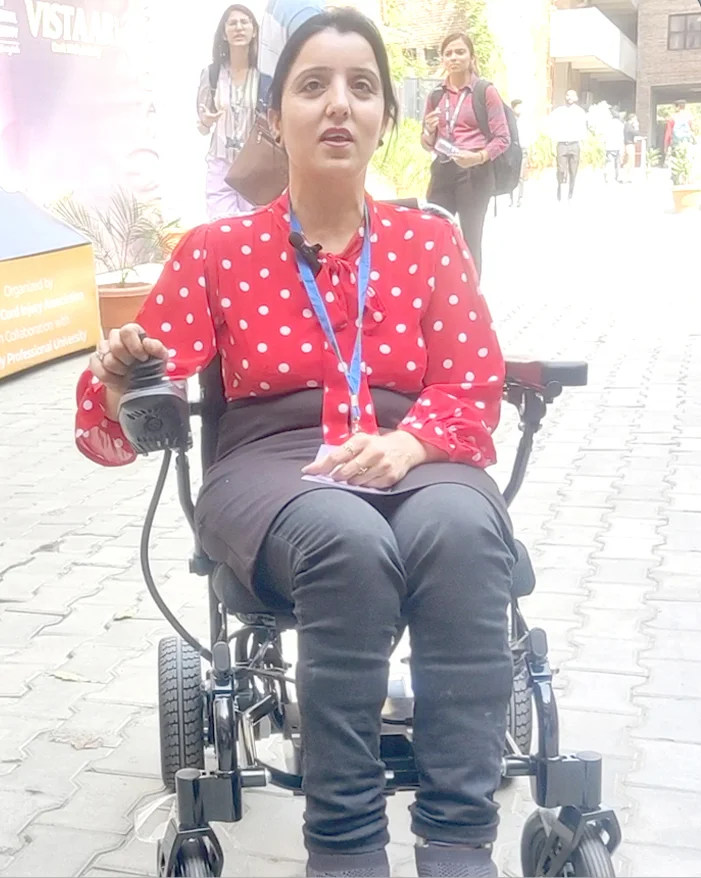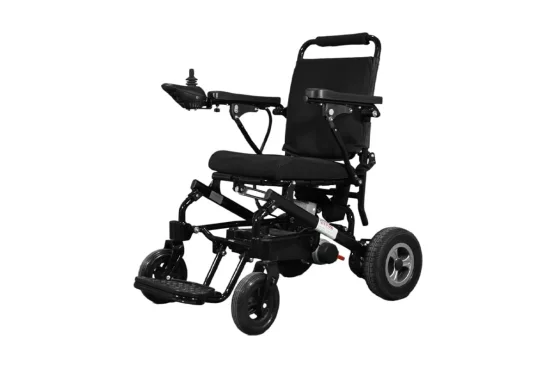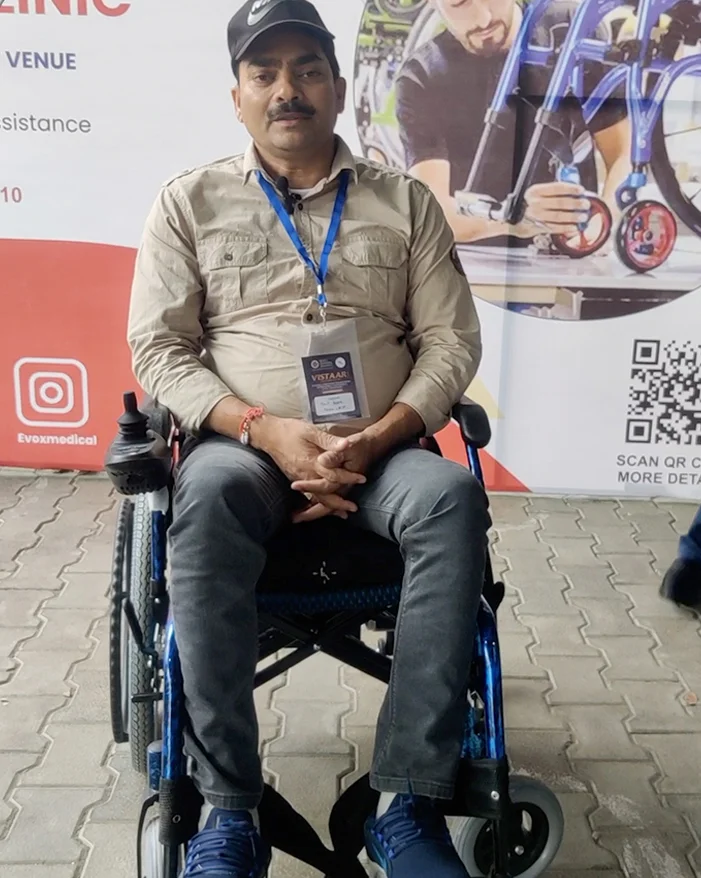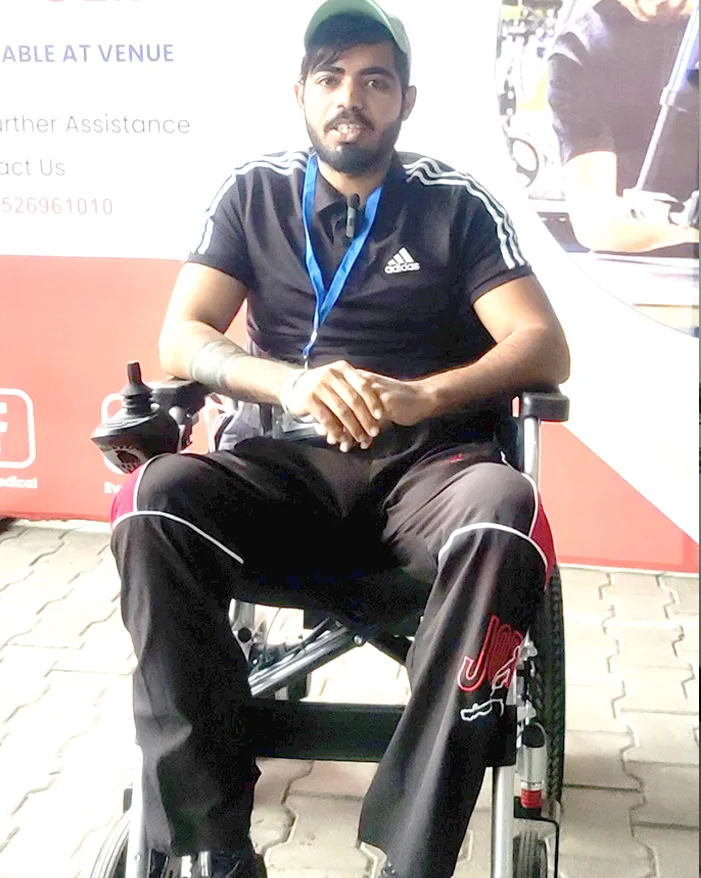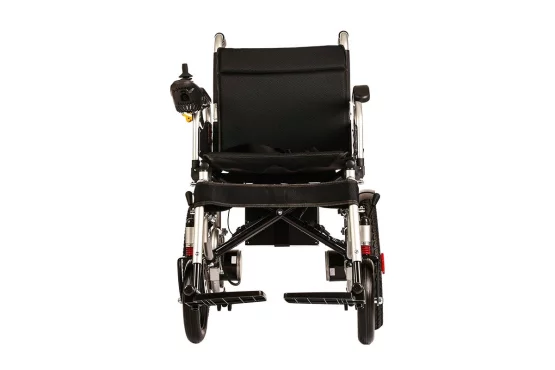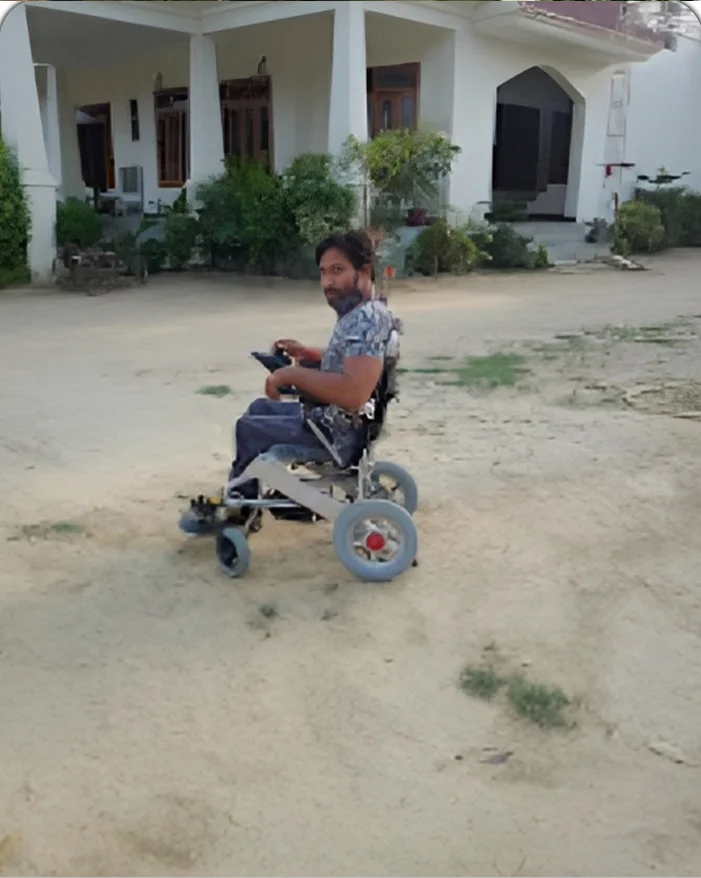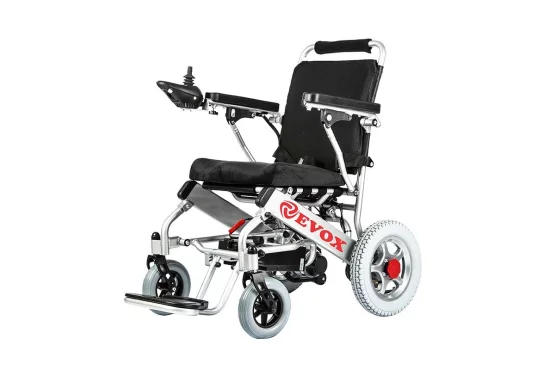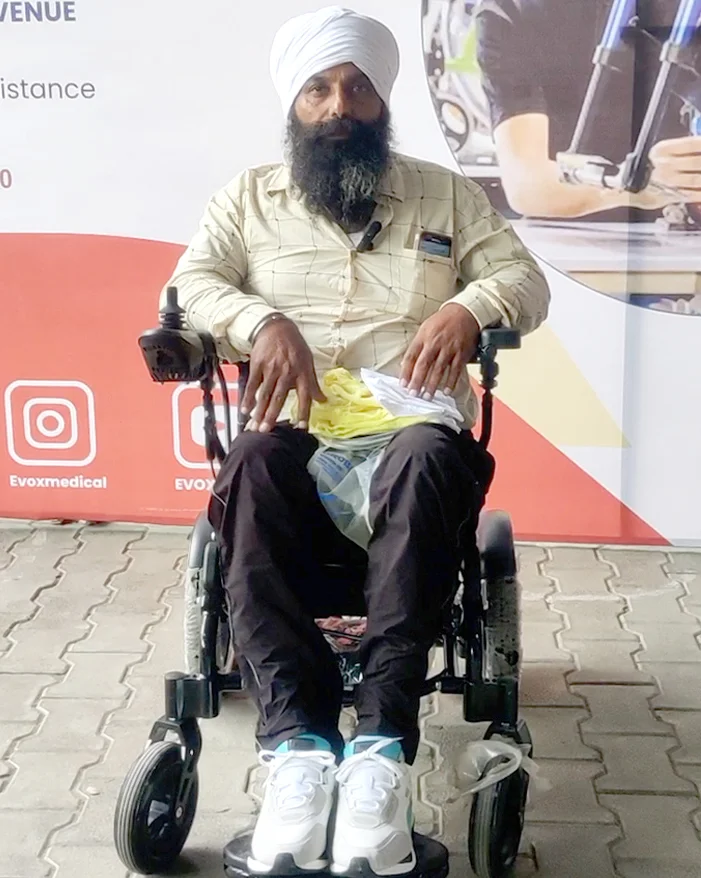Manual vs. electric wheelchairs? Find the right fit & answers to all your wheelchair FAQs.

How do people use a wheelchair without arms and legs?
There are a few ways people who have no arms and legs can operate a wheelchair:
-
Head control: Special wheelchairs are designed with a joystick controlled by head movements. By tilting their head in a certain direction, the user can move the wheelchair forward, backward, and turn.
-
Sip and puff: This system uses a straw or similar device to control air pressure. By sipping or puffing, the user can operate different functions of the wheelchair.
-
Chin control: A chin control uses a small joystick that the user operates with their chin.
Some wheelchairs may also have additional features for increased independence, such as:
-
Voice control: High-tech wheelchairs can be controlled by voice commands.
-
Environmental controls: These allow the user to operate doors, lights, and other devices with the wheelchair's controls.
It's important to remember that every person's situation is unique. The best way for someone with limited mobility to operate a wheelchair depends on their individual needs and abilities. An occupational therapist can help assess someone's situation and recommend the most suitable wheelchair and control system.
What are some good alternatives to motorized wheelchairs?
There are several alternatives to motorized wheelchairs depending on the user's ability and needs. Here are some options:
-
Manual wheelchairs:These are wheelchairs that are propelled by the user's arms. They come in a variety of styles, including lightweight chairs for everyday use and heavy-duty chairs for off-road use.
-
Power-assisted wheelchairs:These wheelchairs have a small motor that helps the user propel the chair. This can be a good option for people who have some upper body strength but may tire easily.
-
Scooters:Scooters are three- or four-wheeled vehicles that are steered by handlebars. They are a good option for people who have difficulty propelling a wheelchair or who need to travel long distances.
-
Standing wheelchairs:These wheelchairs allow the user to stand up while remaining seated. This can be helpful for people who need to improve their circulation or who want to be able to reach higher objects.
-
Walkers:Walkers are mobility aids that have four legs and handles. They are a good option for people who can walk short distances but need some support for balance.
-
Canes:Canes are single-point mobility aids that provide stability and support. They are a good option for people who have some walking ability but need extra support.
-
Crutches:Crutches are mobility aids that are used in pairs. They provide support for people who have difficulty walking without assistance.
The best alternative to a motorized wheelchair will depend on the individual's needs and abilities. It is important to consult with a doctor or occupational therapist to determine the best option.
How to find a wheelchair for a disabled man with one leg?
Here's how to find a wheelchair for a disabled man with one leg:
Consult a medical professional:
-
Doctor: A doctor can assess the man's specific needs and limitations, and provide a referral to an occupational therapist.
-
Occupational Therapist (OT): An OT specializes in helping people with disabilities find the right equipment to maintain independence. They will conduct a comprehensive evaluation, considering factors like:
-
Strength and mobility in remaining leg and upper body
-
Amputation level (above knee or below knee)
-
Balance and coordination
-
Environment (indoor/outdoor use)
-
Daily activities
Types of wheelchairs to consider:
Based on the evaluation, the OT might recommend one of these wheelchairs:
-
Manual wheelchair: A standard option for those with some upper body strength. It can be customized with features like:
-
Uneven seat: Raises the hip on the prosthetic side for better balance
-
Swing-away legrests: Easier transfers
-
Hand brakes: Easier braking with one hand
-
Power-assisted wheelchair: A good option if the man has limited upper body strength. It offers some motorized assistance for propulsion.
Finding a wheelchair supplier:
-
The OT might have recommendations for wheelchair suppliers in your area.
-
You can also search online for reputable wheelchair suppliers who carry a variety of brands and models.
Trying out the wheelchair:
-
Most reputable suppliers will allow the man to try out different wheelchairs to ensure a good fit and comfortable operation.
-
The OT can help with adjustments and provide training on safe and efficient use of the wheelchair.
What is the best wheelchair hack?
Determining the "best" wheelchair hack depends on individual needs, but here are some strong contenders across different categories:
For Independence and Daily Activities:
-
Universal Cuff Key: A single key that unlocks most public bathroom accessible door locks. This eliminates the need to carry around multiple keys.
-
Cup Holder/Phone Holder: Attaches to the wheelchair frame, allowing for easy access to drinks and phones while on the go.
-
Backpack/Cargo Bag: Attaches to the back of the chair, providing additional storage for carrying essentials.
-
Reacher/Grabber Tool: Extends reach to grab objects off the floor or high shelves.
For Comfort and Safety:
-
Pressure Relief Padding: Reduces pressure sores, a common concern for wheelchair users.
-
Mirror Attachment: Provides a rear view without needing to turn the entire chair.
-
Headrest/Lumbar Support: Improves posture and reduces back pain during extended use.
-
Reflective Tape/Lights: Increases visibility in low-light conditions.
For Specific Needs:
-
Phone Charger: Connects to the power source of a motorized wheelchair, keeping your phone charged. (For motorized wheelchairs only)
-
Sip and Puff Control System: Allows users with limited mobility to operate a motorized wheelchair using breath control.
-
Head Control System: A joystick controlled by head movements for users with limited upper body mobility.
Remember, it's always a good idea to consult with a healthcare professional or occupational therapist before implementing any modifications to ensure safety and effectiveness. They can assess your specific needs and recommend the most suitable hacks for you.
How to get an affordable wheelchair?
There are several ways to find an affordable wheelchair, depending on your location and situation. Here are some options to consider:
Financial Assistance Programs:
-
Government Programs: Many countries have government programs that offer financial assistance for durable medical equipment, including wheelchairs. These programs might have eligibility requirements, so research what's available in your area.
-
Private Insurance: Some private health insurance plans may cover the cost of a wheelchair, either partially or fully. Check with your insurance provider to understand your specific coverage.
Non-Profit Organizations:
-
Charity Organizations: There are charitable organizations that donate or provide financial assistance for wheelchairs. You can search online for organizations in your area that focus on disability support or mobility equipment.
-
Disability Rehabilitation Centers: These centers may offer refurbished or pre-owned wheelchairs at a reduced cost. They can also be a good resource for guidance on finding financial assistance.
Alternative Sources:
-
Used Wheelchairs: There are several places where you can find used wheelchairs at a lower cost. Here are some options:
-
Thrift Stores: Many thrift stores sell used wheelchairs and other medical equipment.
-
Online Marketplaces: Websites like Craigslist or Facebook Marketplace may have used wheelchairs for sale in your area.
-
Medical Equipment Resellers: Some businesses specialize in selling refurbished or pre-owned medical equipment, including wheelchairs.
Additional Tips:
-
Negotiate with Suppliers: When purchasing a new wheelchair from a medical equipment supplier, you may be able to negotiate the price, especially if you are paying out of pocket.
-
Consider a Manual Wheelchair: Generally, manual wheelchairs are more affordable than motorized wheelchairs. If you have the upper body strength to propel yourself, a manual wheelchair can be a cost-effective option.
How to get a wheelchair for temporary use?
Here are some ways to get a wheelchair for temporary use:
Rental:
-
Medical Equipment Suppliers: Many medical equipment suppliers offer wheelchair rentals. This is a good option if you only need a wheelchair for a short period, such as after surgery or during an injury recovery. Prices will vary depending on the type of wheelchair and rental duration.
-
Durable Medical Equipment (DME) Rentals: Some DME rental companies specialize in providing wheelchairs and other medical equipment for short-term needs. You can search online for DME rental companies in your area.
Borrowing:
-
Hospitals and Rehabilitation Centers: Some hospitals and rehabilitation centers may have loaner wheelchairs available for short-term use. They might prioritize loaning to recently discharged patients, so check their policy.
-
Community Organizations: Certain non-profit organizations that support people with disabilities may offer wheelchair loan programs.
-
Friends or Family: If someone you know has a wheelchair they no longer need, you may be able to borrow it temporarily.
Important Considerations:
-
Prescription: While not always mandatory, some rental companies or loan programs may require a doctor's prescription for a wheelchair.
-
Evaluation: It's important to get properly sized and fitted for a wheelchair, even for temporary use. This can help prevent discomfort and injury. A medical professional or therapist might be involved in this process.
-
Insurance Coverage: In some cases, your health insurance might cover the cost of a wheelchair rental. Check with your insurance provider to see if temporary wheelchair rentals are covered under your plan.
How do you qualify for an electric wheelchair?
Qualifying for an electric wheelchair typically involves a combination of factors assessed by a medical professional. Here's a breakdown of the key points:
Medical Evaluation:
-
A doctor or qualified healthcare professional will assess your medical condition and its impact on mobility.
-
They'll consider factors like strength, endurance, balance, coordination, and pain levels.
Functional Needs Assessment:
-
This evaluation focuses on how your mobility limitations affect daily activities like bathing, dressing, toileting, and getting around your home environment.
-
An occupational therapist might be involved in this assessment.
Trial and Evaluation of Alternatives:
-
The doctor might recommend trying a manual wheelchair first to see if it meets your needs.
-
This helps determine if an electric wheelchair is truly necessary.
Insurance Coverage:
-
Even if a doctor prescribes an electric wheelchair, your insurance company might have specific requirements for coverage.
-
They may require documentation from the doctor justifying the need for an electric wheelchair and demonstrating why a manual wheelchair wouldn't be sufficient.
Here are some general reasons why an electric wheelchair might be prescribed:
-
Limited upper body strength: If you lack the strength to propel a manual wheelchair effectively.
-
Severe pain: If pain makes it difficult or impossible to propel yourself manually.
-
Balance or coordination issues: If you have significant balance or coordination problems that make using a manual wheelchair unsafe.
-
Long distances: If you need to travel long distances regularly and a manual wheelchair would be too tiring.
-
Respiratory problems: If you have respiratory issues that make manual propulsion difficult.
Remember:
-
Qualification criteria can vary depending on your location and specific insurance plan.
-
It's important to consult with a doctor or healthcare professional to understand the process and determine if an electric wheelchair is right for you.
-
They can guide you through the evaluation and documentation process required for insurance coverage.
Where can I find reputable power wheelchair dealers?
here are a few resources that might help you find reputable power wheelchair dealers in Mohali:
Review Websites: You can search online review websites to see what previous customers have said about different wheelchair dealers in Mohali. Here are some general review websites you can try:
-
Google Maps
Manufacturer Websites: Some power wheelchair manufacturers might have a list of authorized dealers on their websites. Here are a couple of Mohali-based power wheelchair manufacturers you can explore:
-
EVOX (https://shopevox.com/)
-
EVOX Group (Mohali): This is a local power wheelchair manufacturer, and they might also sell wheelchairs directly. (https://shopevox.com/)
Additional Tips:
-
Contact the Dealers: Once you have a few potential dealers in mind, contact them directly to inquire about the specific power wheelchairs they carry and their experience fitting individuals for wheelchairs.
-
Insurance Coverage: If you plan to use insurance to help cover the cost of the wheelchair, check with your insurance provider about their specific requirements and in-network providers.
-
Ask for Recommendations: Talk to your doctor, physical therapist, or occupational therapist for recommendations on reputable power wheelchair dealers in your area.
What are the features of Electric wheel-chair?
Electric wheelchairs come with a variety of features to improve mobility, comfort, and safety for the user. Here's a breakdown of some key features:
Power and Drive System:
-
Motor: Electric wheelchairs rely on electric motors for propulsion. The motor's power will determine the wheelchair's speed and ability to handle inclines.
-
Drive System: There are three main drive system configurations:
-
Front-wheel drive: Offers good maneuverability and works well indoors. May require more effort to navigate uneven terrain outdoors.
-
Rear-wheel drive: Provides better stability and outdoor performance, but may have a wider turning radius.
-
Mid-wheel drive: Offers a balance between maneuverability and stability, suitable for both indoor and outdoor use.
Control Systems:
-
Joysticks: The most common control system, allowing users to steer and control speed with a joystick.
-
Head controls: For users with limited hand or arm mobility, head movements control the wheelchair.
-
Sip and puff: Uses breath control to operate the wheelchair.
-
Chin control: A joystick controlled by movements of the chin.
Seating and Positioning:
-
Adjustable seating: Allows for customization of seat height, depth, and angle for optimal comfort and positioning.
-
Pressure relief cushions: Helps prevent pressure sores, a concern for long-term wheelchair users.
-
Headrests and lumbar support: Improves posture and reduces back pain during extended use.
Additional Features:
-
Power tilt and recline: Electronically adjusts the seat angle for increased comfort and pressure relief.
-
Elevating leg rests: Improves circulation and reduces swelling in legs.
-
Lighting: Headlights and taillights for improved visibility in low-light conditions.
-
Oxygen tank holders: For users who require supplemental oxygen.
-
Travel bags and baskets: For carrying personal belongings.


